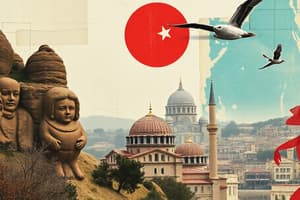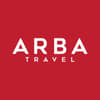Podcast
Questions and Answers
What is the term for the body part described as 'the part that helps an animal see'?
What is the term for the body part described as 'the part that helps an animal see'?
- Foot
- Ear
- Beak
- Eye (correct)
Which body part is known as the 'appendage'?
Which body part is known as the 'appendage'?
- Neck
- Appendage (correct)
- Wattle
- Spur
What do you call the body part that connects the head to the body?
What do you call the body part that connects the head to the body?
Neck
What is the name of the body part referred to as the 'beak'?
What is the name of the body part referred to as the 'beak'?
What is the term for the part located at the rear end of a bird?
What is the term for the part located at the rear end of a bird?
What do you call the body part that makes up a bird's upper limbs?
What do you call the body part that makes up a bird's upper limbs?
What is referred to as 'thigh feathers'?
What is referred to as 'thigh feathers'?
What is the term for the fleshy growths on the head and throat of some birds, like turkeys?
What is the term for the fleshy growths on the head and throat of some birds, like turkeys?
What is the name of the fleshy part hanging from the neck of turkeys and some birds?
What is the name of the fleshy part hanging from the neck of turkeys and some birds?
What is the body part called that typically refers to the lower limbs of a bird?
What is the body part called that typically refers to the lower limbs of a bird?
What do you call the back side of a bird's body?
What do you call the back side of a bird's body?
What is the body part referred to as the 'breast'?
What is the body part referred to as the 'breast'?
What do you call the body part used for grasping or holding food, known as the 'foot'?
What do you call the body part used for grasping or holding food, known as the 'foot'?
Flashcards are hidden until you start studying
Study Notes
Turkey Body Parts Overview
- Head: The upper part of a turkey, crucial for sensory functions and communication.
- Ear: Located on the side of the head, used for detecting sounds; turkeys have excellent hearing.
- Throat: Area containing the esophagus, plays a role in vocalization and eating.
- Neck: Long muscular structure connecting the head to the body, enables turkeys to reach food and communicate.
- Cape: The feathers around the neck; can show color variations based on turkey breed.
- Shoulder: Connects the wing to the body; important for mobility.
- Back: The upper part of the turkey’s body; supports the wings and provides a surface for feather growth.
- Wing Bow: The curved area of the wing; important for flight and balance.
- Wing Bar: The visible stripe or marking on the wing; helps in species identification.
- Saddle: The area just above the tail, often features longer feathers in male turkeys.
- Secondaries: Feathers on the inner part of the wing, aid in flight stability.
- Tail Coverts: Small feathers covering the base of the tail; contribute to tail shape.
- Fluff: Down-like feathers; provide insulation and warmth.
- Skirts: Feathers hanging from the sides of the turkey, can indicate maturity.
- Under Tail Coverts: Feathers located underneath the tail; enhance the tail's appearance.
- Tail: The rear structure used for balance and flight, integral for display in mating rituals.
- Spur: A sharp bony projection on the leg, used in defense and during mating encounters.
- Toe: Digits on the foot that provide traction and balance.
- Foot: Supports the turkey's weight, important for movement across various terrains.
- Shank: The lower leg part, valuable for locomotion and balance.
- Hock: The joint between the shank and the leg; impacts the turkey's ability to walk and run.
- Leg: Essential for movement; consists of multiple joints and muscles.
- Thigh Feathers: Feathers covering the upper leg, used for display and protection.
- Keel: The breastbone, critical for flight muscle attachment.
- Beard: A tuft of feathers found on the chest in male turkeys; a sign of maturity and used in mating displays.
- Breast: The front part of the body, often a prime meat cut in culinary contexts.
- Wing Front: The leading edge of the wing; crucial for aerodynamics.
- Caruncles: Fleshy, bumpy growths on the turkeys' head, unique to each individual.
- Wattle: The fleshy part hanging from the neck; used in communication and displays.
- Appendage: Refers to any body part that is an extension, such as wings and legs.
- Beak: The hard structure for feeding, grooming, and social interactions.
- Eye: Located on the head, critical for vision, with a wide field of view.
Studying That Suits You
Use AI to generate personalized quizzes and flashcards to suit your learning preferences.




